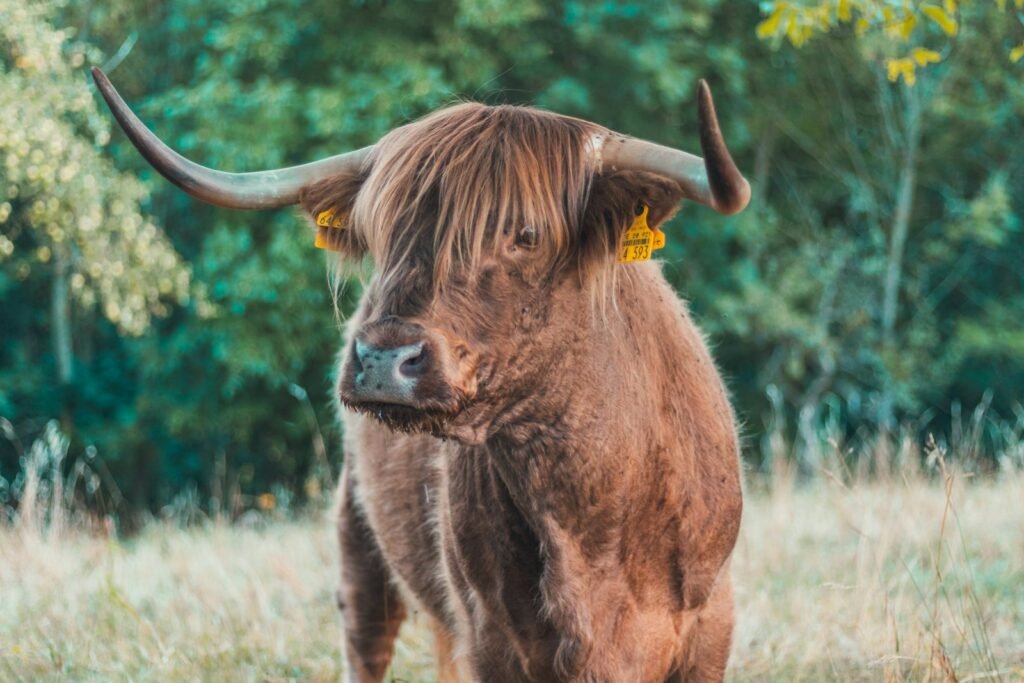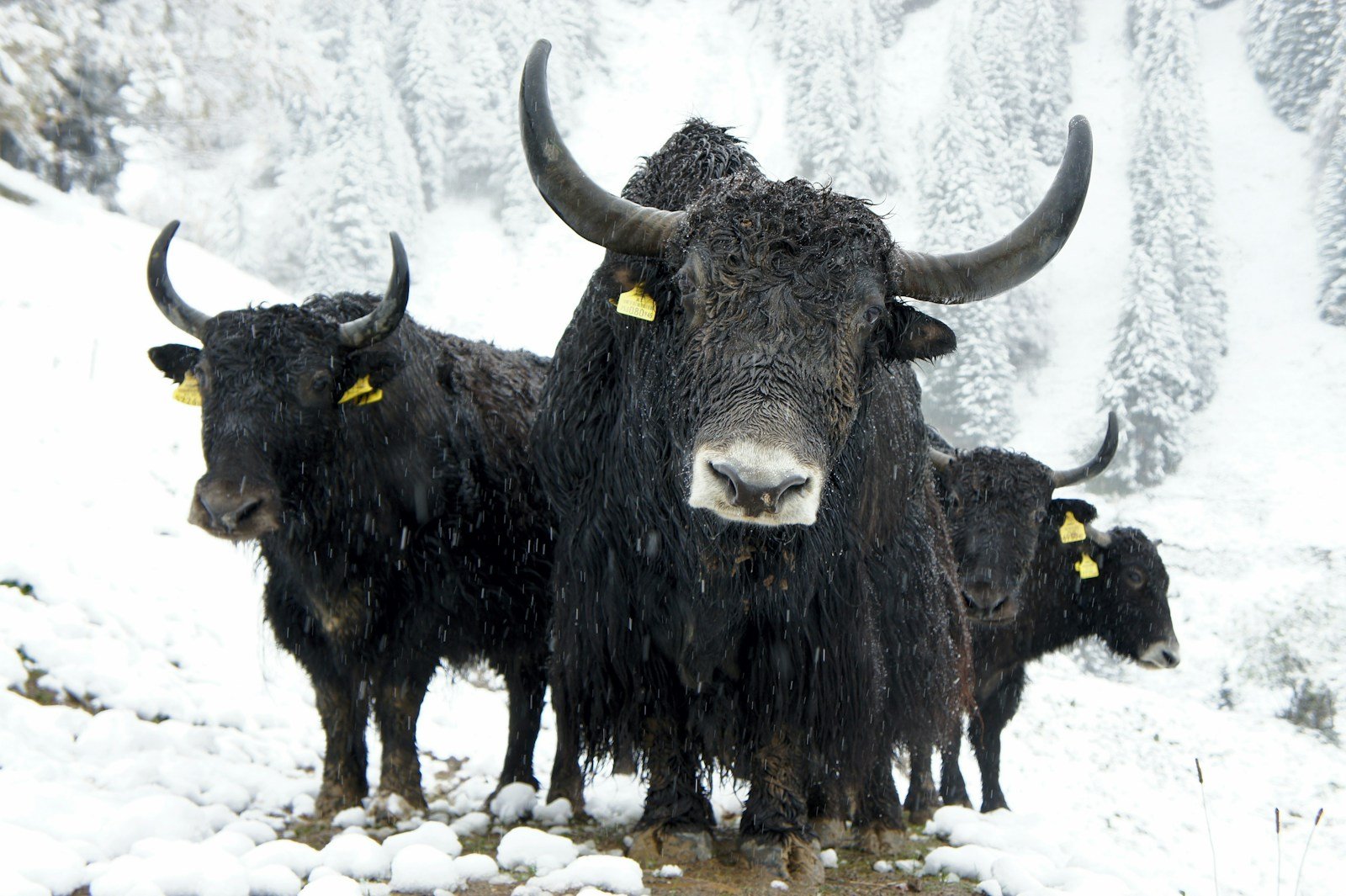In the Bible, symbols carry deep meanings. Ever thought about what a bull symbolizes? What does a bull symbolize in the bible? It might make you think of power or strength. Let’s dive into the biblical meaning of the bull and its significance in scripture.
The Golden Calf Narrative
The story of the golden calf is found in Exodus 32. It’s a key event in the Israelites’ history. It warns us about the dangers of idolatry. Moses was up on Mount Sinai, getting the Ten Commandments from God, when this happened.
While Moses was away, the Israelites got restless. They made a golden calf to worship as their new god. This was a big betrayal of their promise to the one true God. It showed they had lost faith in Yahweh.
Why did the Israelites turn to idolatry? They had seen many miracles, like the plagues in Egypt and crossing the Red Sea. Yet, they still chose to make a god they could see and touch.
Some think the golden calf was not a total rejection of Yahweh. They might have seen it as a way to make God more real to them. In ancient times, gods were often seen as symbols of fertility and plenty.
While the Israelites’ worship of the golden calf was a serious sin, we must consider their cultural and religious background. It helps us understand their actions better.
The story of the golden calf is also mentioned in later parts of the Bible. In Nehemiah 9:16–21, it’s seen as an example of rebellion and idolatry. The apostle Paul talks about it in 1 Corinthians, warning us to avoid idolatry.
The Exodus account of the golden calf might have taken ideas from later events. It seems to mix stories, including those of Jeroboam, who made golden calves in the northern Kingdom of Israel. This shows how important the theme of idolatry was in Israel’s history.
Worshiping the golden calf had harsh consequences. The Levites, following Moses, killed about 3,000 who had joined in. This event, as told in Legends of the Jews by Louis Ginzberg, shows how serious this sin was.
The golden calf story teaches us about the ongoing fight against idolatry. It reminds us to keep our worship focused on the one true God, not on things we make ourselves.

Bull Symbolism in the Bible
The Bible is full of symbolic images, and the bull is a key symbol. It stands for strength, power, and facing strong enemies.
Proverbs 14:4 talks about the strength of the bull, comparing enemies to “strong bulls of Bashan.” This shows how powerful the bull is and how tough the enemies are. Psalms 22:13 also talks about enemies being like “strong bulls of Bashan,” showing they are a threat.
The bull is also linked to God in the Bible. In ancient times, people saw a connection between God and the bull. This was especially true in Canaanite beliefs, where the god Baal was seen as a bull. This shows how bulls were seen as sacred across many ancient cultures.
The Bible often talks about using a bullock or young bull for atonement and making things right with sins. Leviticus gives rules for sin offerings with a bullock. The ritual of the Day of Atonement also uses a bullock for purification.
In the New Testament, there are fewer mentions of bulls but a comparison is made with Jesus Christ. This shows how the bullock’s sacrifice is like Jesus’ redemptive work. It’s about substitutionary atonement, a key idea in understanding salvation.
Overall, the bull symbolizes strength, power, and facing strong enemies in the Bible. It’s also linked to God. Its role in stories and rituals shows its deep impact on religious life.
Bull Symbolism in the Ancient World
Bulls were very important in ancient times. They played big roles in art, myths, and religious beliefs. Different cultures saw bulls in their own special ways, showing how much they meant to them.
In Ancient Egypt, bulls were sacred animals. They picked these bulls for their perfect traits and kept them in temples. When they died, they were treated like kings and buried with great respect.
The Apis bull was a big deal in Egypt too. It was seen as a symbol of Ptah and later Osiris. Some Apis bulls got fancy tombs in the Serapeum of Saqqara, showing how much people admired them.
In Central Anatolia, people kept bull skulls with horns in a special place from the 8th millennium BCE. These skulls were linked to the sacred bull of the Hattians in Hurrian and Hittite stories. This shows how important bulls were in that area.
The Minoans in Crete also loved bulls. They used bull heads and horns a lot in their art. Their frescos and ceramics showed bull-leaping, a ritual that showed strength and bravery.
In South Asia, bulls were important too. In the Indus Valley, bulls were shown on seals. In Hinduism, Nandi, the sacred bull, is a key follower of Shiva.
On Cyprus, bull masks from real skulls were used in rituals. Archaeologists found clay figures and stone altars with bull horns. This proves bulls were big in Cypriot culture.
In the Levant, archaeologists often find bull figurines. Bulls stood for strength and fertility. Gods like Baʿal and El were linked to bulls. A 16th-century BCE bull calf in Ashkelon and a 12th-century BCE bull at the Bull Site in Samaria are examples.
In Abrahamic religions, bulls turned into symbols of a bull demon or the “horned devil.” Young bulls marked the borders of the Kingdom of Israel, showing where it started and ended.
Bulls left a lasting mark on ancient cultures. They stood for strength, fertility, and connections to the divine. Their symbolic power is still felt today.
The Bull Star Sign
In astrology, the bull symbol is linked to the Taurus zodiac sign. People born under Taurus, known as The Bull, are ruled by Venus. They are famous for their beauty, love for art, and desire for material things. Taurus traits include being loyal, a natural leader, honest, sensual, and determined.
They are practical, ambitious, and love luxury.
Famous Taurus include Adele, David Beckham, Cate Blanchett, and Cher.
Taurus can be stubborn and angry at times. But their determination and practicality help them reach their goals. They are very loyal and make great friends and partners.
Like the bull symbol, Taurus are strong and can keep going. They are dependable and work hard for success and stability.
They love beauty and have an artistic side. Taurus often have a talent for art, music, or design.
But, Taurus might focus too much on material things and can be too possessive. They want security and don’t like change.
In summary, the Taurus zodiac sign, symbolized by the bull, is all about beauty, art, and wanting material things. Taurus are known for their loyalty, leadership, honesty, sensuality, and determination. They are strong, appreciate beauty, and enjoy the finer things in life.
The Bull in Other Cultures
The bull symbolizes more than just its role in the Bible. Around the world, it means different things to different people. It carries deep meanings and represents various concepts.
Bull Symbolism in Native American Culture
In Native American culture, the bull is highly valued. It stands for stability, safety, and strength. It’s seen as a powerful being that can carry heavy loads.
Bull Symbolism in Christianity
Christianity sees the bull as a symbol of forgiveness and new life. It connects to Jesus Christ and his sacrifice for humanity’s salvation.
Bull Symbolism in Chinese Culture
In China, the bull is tied to farming and hard work. It stands for determination and never giving up. The bull is a symbol of strength and success through hard work.
The bull’s meaning varies across cultures, showing its global importance. It’s a powerful animal that shares traits and values with people everywhere.
The Bull in Art and History
The bull has been a powerful symbol in art and history. From ancient cave paintings to modern art, bulls carry deep symbolism. Artists have shown their strength, masculinity, and connection to us.
One of the earliest known bull art is from cave paintings around 12,000 BCE. These paintings show humans’ deep respect for bulls. They symbolize strength, power, and physical strength.
In ancient Egypt, the bull was very important. It stood for strength and masculinity. Pharaohs were called ‘mighty bulls,’ linking them to the animal’s power. The bull-god Apis was seen as the creator god Ptah, linking bulls to divinity and plenty.
Greek mythology is full of bull stories. Zeus turned into a bull to win Europa’s heart. The river god Achelous was a bull with a man’s head, showing the bull’s many sides.
Many famous artists have used bulls in their work. Pablo Picasso was especially drawn to them. He saw bulls as symbols of strength, passion, and a deep connection to nature. His bull artworks show the animal’s power and explore human feelings and identity.
Other artists like Rembrandt and Arshile Gorky have also used bulls in their art. They each brought their own view of the bull’s symbolism.
The bull’s role in art and history is clear. It stands for strength, power, and our bond with nature. Its lasting impact has made it a favorite theme for artists and art lovers.
Bulls in Rituals and Traditions
Bulls have played a big role in many rituals and traditions around the world. In Spanish culture, they are very important. This is seen in events like bullfighting and the famous Running of the Bulls.
Bullfighting: A Symbol of Bravery and Dominance
Bullfighting, or “corrida de toros” in Spanish, has been around for centuries. It’s a tradition that is both loved and debated. Bullfighting shows the battle between humans and bulls. It’s about bravery, skill, and the Spanish identity.
The Running of the Bulls: A Thrilling Celebration
The Running of the Bulls, or “encierro,” is a key Spanish tradition. It happens every year in Pamplona during the fiestas. Runners dash through the city’s streets with bulls, testing their bravery and speed.
This event is a big test of courage and agility. Runners try to avoid the bulls and the crowds. It’s a thrilling event that brings together locals and tourists, filling the streets with excitement.
These traditions show our interest in the bull’s power and beauty. They let people show their bravery and strength against these animals. The symbolism of bulls in Spanish culture is deep. It connects humans with nature and celebrates courage and strength.
The Energetic Symbolism of Bulls
Bulls carry deep symbolism across cultures, showing us strength and power. In dreams, they reveal our inner strength, willpower, and primal urges. The colors and actions in these dreams tell us a lot about ourselves.
Dreaming of bulls shows us our inner strength and ability to face challenges. A powerful black bull might mean we’re facing tough times or difficult people. These dreams remind us of our inner power and the need to push through hard times.
Bulls also symbolize our sexual desires and passions. They represent virility and the drive for intimacy. Dreaming of a bull in a sensual way means we’re seeking more passion and closeness in our lives.
When we dream of bulls, we should look at the bull’s behavior and setting. A charging bull might mean we’re ready to take on new challenges. A calm bull in a field could suggest a peaceful time ahead. Each dream has its own special meaning.
The symbolism of bulls in dreams pushes us to think about our strength and deep desires. They urge us to find our inner power and be brave. By understanding these dreams, we can learn valuable lessons for our everyday lives.
The Symbolism of the Bull in the Bible
Bulls have deep symbolic meaning in the Bible. They are linked to sacrifices and key rituals like the Passover and the Day of Atonement. These rituals show the importance of making amends through sacrifice.
Bulls symbolize more than just rituals. In the Bible, they stand for strength, power, and even danger. Their size and strength make them perfect symbols for these ideas. For example, in Proverbs 14:4, bulls are like a strong ox, showing hard work and diligence.
In the Bible, bull symbolism is clear in many verses. Genesis 49:6 compares Reuben to an untamed bull, showing his wild and unpredictable nature. Deuteronomy 33:17 talks about the tribe of Joseph’s strength and glory, using a bull image. Psalms 22:13 and Psalms 92 also link bulls with success and life.
Archaeological finds show that ancient cultures like the Greeks, Egyptians, Canaanites, and Assyrians revered bulls. In Greece, Zeus was often seen as a bull. In Egypt, the Apis Bull was seen as the living form of the god Osiris.
The bull’s symbolism in the Bible is also tied to the stars. The zodiac sign Taurus, linked to the bull, was around during the Exodus. This connection adds more meaning to the bull’s symbolism at that time.
Learning about the bull’s symbolism in the Bible helps us understand key themes and teachings. From sacrifices and rituals to strength and power, bulls in the Bible are a powerful symbol. They add depth and meaning to the stories.
The Bull as a Symbol of Strength and Power
In the Bible, the bull is often linked with strength and power. It stands as a symbol of physical strength and the power to beat challenges. Figures like Simeon, Levi, and Joseph are seen with bulls, showing their strength and boldness. The bull symbolizes the force and will needed to face and win over obstacles.
In ancient times, like Babylon, Egypt, and Greece, the bull was very important in religion. The Babylonians saw their main god, Marduk, as a bull. Egypt had living bulls, Apis and Mnevis, as gods. In Greece, the bull was tied to Dionysus worship. Its place in the Zodiac shows its big role in old religions.
The Bible talks a lot about the strength of bulls. The Israelites sacrificing bulls showed Christ’s perfect sacrifice for our sins. Bulls were used for certain sacrifices, like by the high priest or the whole group. The bull stands for power and strength, showing Jehovah’s endless power. It can also mean aggressive enemies of Jehovah and his followers.
The wild bull, called re’em in Hebrew, and bulls in the Book of Revelation show traits like being hard to control, fast, unbeatable, and having strong horns. These traits highlight the bull’s role as a symbol of strength and power. The Bible also talks about treating working animals like oxen well, showing the value of hard work and effort.
FAQ
What does a bull symbolize in the Bible?
The bull in the Bible stands for strength, power, and determination. It shows up as a symbol of enemies, sacrifices, and even God himself.
What is the significance of the golden calf narrative in the Bible?
The story of the golden calf in Exodus shows how the Israelites turned to idolatry. It warns us not to stray from the one God we believe in.
How is the bull symbolized in the ancient world?
In ancient times, bulls were seen as symbols of power, fertility, and strength. They were linked to chief deities in cultures like the ancient Greeks, Egyptians, and Canaanites.
What does the bull represent in astrology?
In astrology, the bull is tied to the zodiac sign Taurus. People born under this sign are seen as loyal, leaders, determined, and sensual.
How does the bull symbol vary across different cultures?
The bull’s meaning changes across cultures. In Native American culture, it stands for stability and durability. In Christianity, it’s about forgiveness and life through sacrifice. In Chinese culture, it’s about hard work and perseverance.
What is the significance of the bull in art and history?
The bull has been a key figure in art for centuries. Artists like Rembrandt, Arshile Gorky, and Pablo Picasso have used it to explore themes of masculinity, power, and our bond with nature.
What are the cultural traditions associated with bulls?
In Spanish culture, bullfighting is a tradition that shows bravery and man’s victory over nature. The Running of the Bulls in Pamplona is a celebration of the bull’s power and majesty.
What does it mean to dream about a bull?
Dreaming of a bull might mean you’re feeling aggressive, determined, or have sexual desires. The details of the dream can tell us more about its meaning, showing us about our strength and how we handle challenges.
How is the bull symbolized in the Bible?
In the Bible, bulls are important symbols. They’re linked to sacrifices, strength, power, and the potential for destruction. They represent hard work, redemption through sacrifice, and God’s divine nature.
How does the bull symbolize strength and power?
The bull in the Bible is always seen as a symbol of strength, power, and overcoming obstacles. It shows us the determination and might we need to face challenges, highlighting the importance of strength in adversity.

Rockin’ the faith, one verse at a time!
Growing up, the Bible’s stories deeply impacted me. Now, with over 15 years of preaching experience, I blend timeless teachings with modern technology, making them relevant for today’s world.
Bible Hub Verse is my platform to share historical insights and thought-provoking articles, exploring both familiar and uncommon Christian topics. My passion is building a welcoming online space for everyone to learn, grow in their faith, and discover the Bible’s enduring message.
Join the journey!
God bless you.








